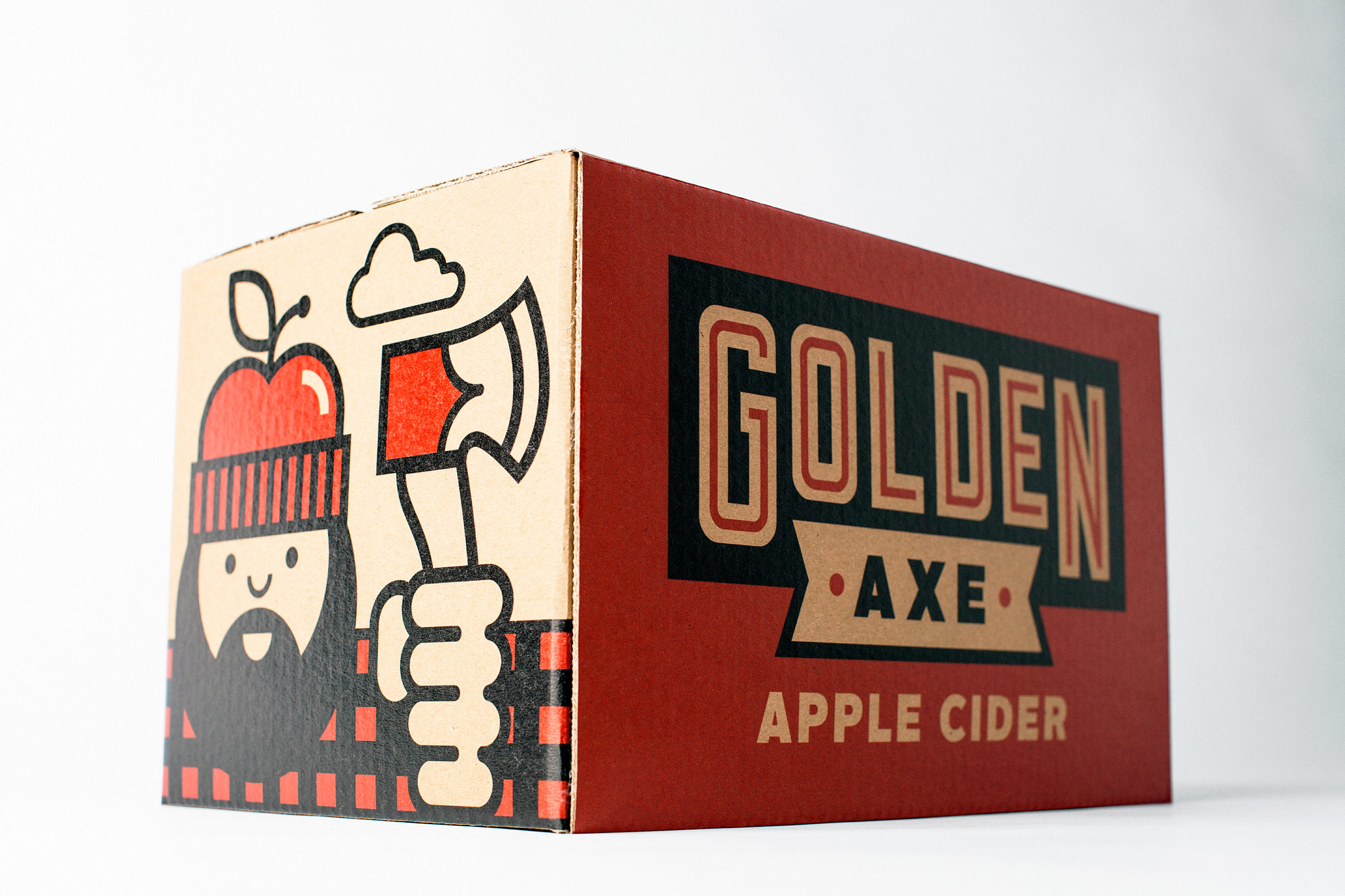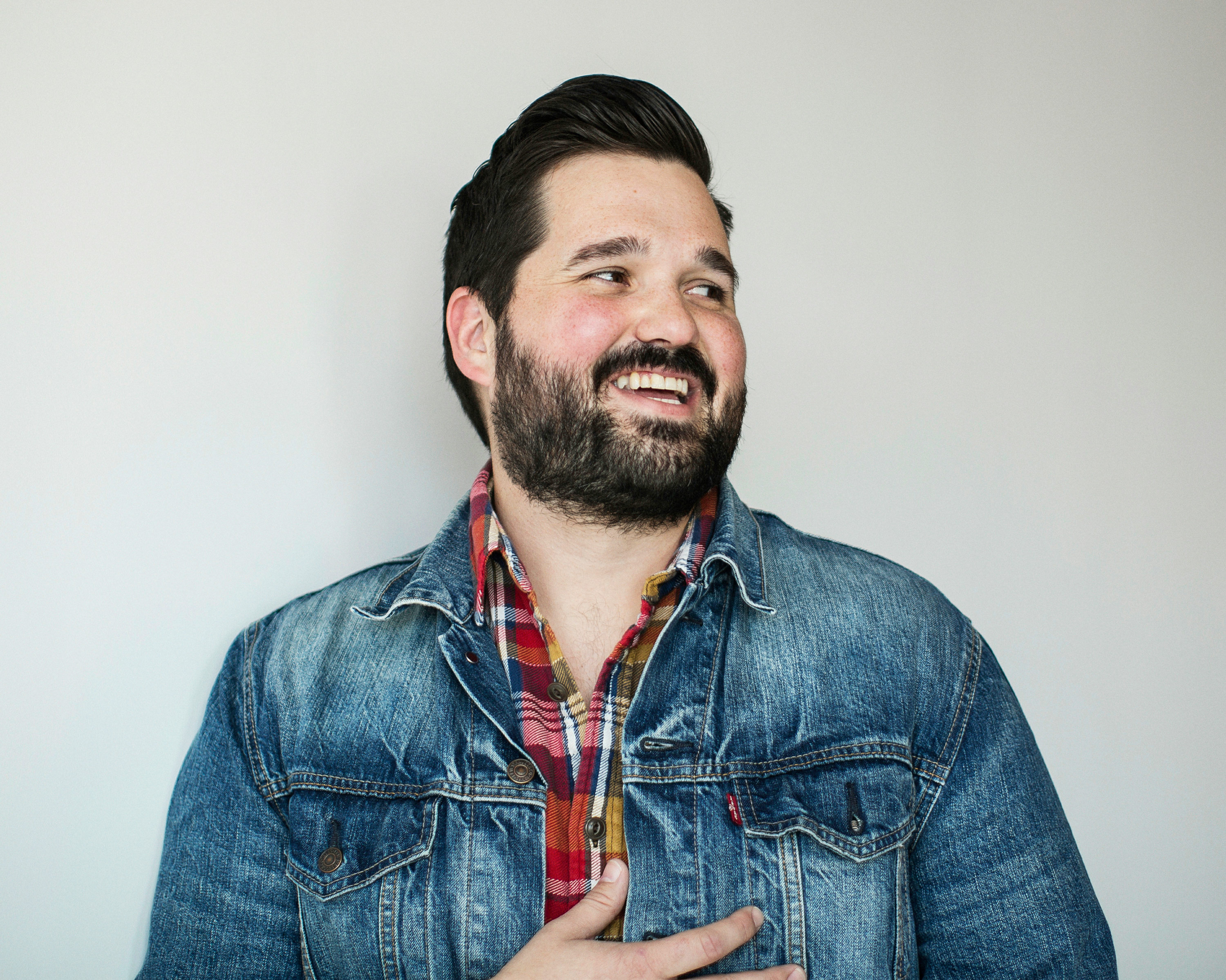
- Interview by Tina Essmaker October 28, 2014
- Photo by Paul Sobota
Mikey Burton
- designer
- illustrator
Mikey Burton is a part-time designer and a part-time illustrator who has worked professionally for about a decade. During that time, he’s done a lot of work for clients such as Converse, ESPN, Target, the New York Times, Time Magazine, and Esquire, among others. Burton spent his formative years at the great Kent State University in Ohio where he earned his master’s degree.
Tina: Describe your path to what you’re doing now.
It’s been a long path. Growing up, I think I was like many kids who eventually go into this industry: I liked to draw. My parents were also very encouraging. My mom bought me pencils, pens, and crayons to ensure I was fully stocked all the time!
In high school, I really liked art class and wanted to do something creative, but didn’t know what that meant. I wanted to be an artist, but not a starving artist—I wanted to make a career out of my work. I blindly decided to go into graphic design because it sounded like I’d get to use a computer and design CD packaging for a band or something, which is really funny to think about now.
I attended college at Kent State University and it was very different from what I thought it would be. I wanted to quit for the first couple years. When I started in 2000, the program was still all analog. I had to buy all these drafting supplies, and the first few projects involved inking lines and circles in a grid by hand with a T-square. Everything had to be perfect—it was graded down to 1/64 of an inch—and I didn’t like that at all. I wanted to do something creative, but that seemed to be the complete opposite. But my parents encouraged me to stick with it, so I did. Eventually, school became easier, and I started doing well. Kent actually offered a degree that combined a master’s and a bachelor’s, so I was able to earn them both at the same time. If anyone asks me if they should go to grad school where they went to undergrad, I’d probably say no, but that package deal was nice for me.
I made good friends at college, many of whom I’m still friends with today. We constantly challenged each other to try new things. In 2004, there was a giant resurgence of gig poster work, and we thought it would be cool to do that. We didn’t know how to screen-print, but we haphazardly taught ourselves how and just started doing it. We didn’t necessarily think we’d make any money—it was just something fun to do. At that time, we took on any opportunity we could, whether it was putting our posters in a coffee shop or including them in a little gallery show. This was before any social media awesomeness, so we took it to the street and did everything locally. We contacted local venues and started printing posters for friends’ bands.
You were all still in school and doing this on the side for fun?
Yep. It actually led to some commercial work for us, which was crazy. One of the gallery owners we knew had a contact at MTV2, so we were able to do some work for them while we were still in college. That’s when we realized we could make a business out of it. My friends are still running the company, which is called Little Jacket.
I did that for about four years, until 2008 when the economy went to shit.

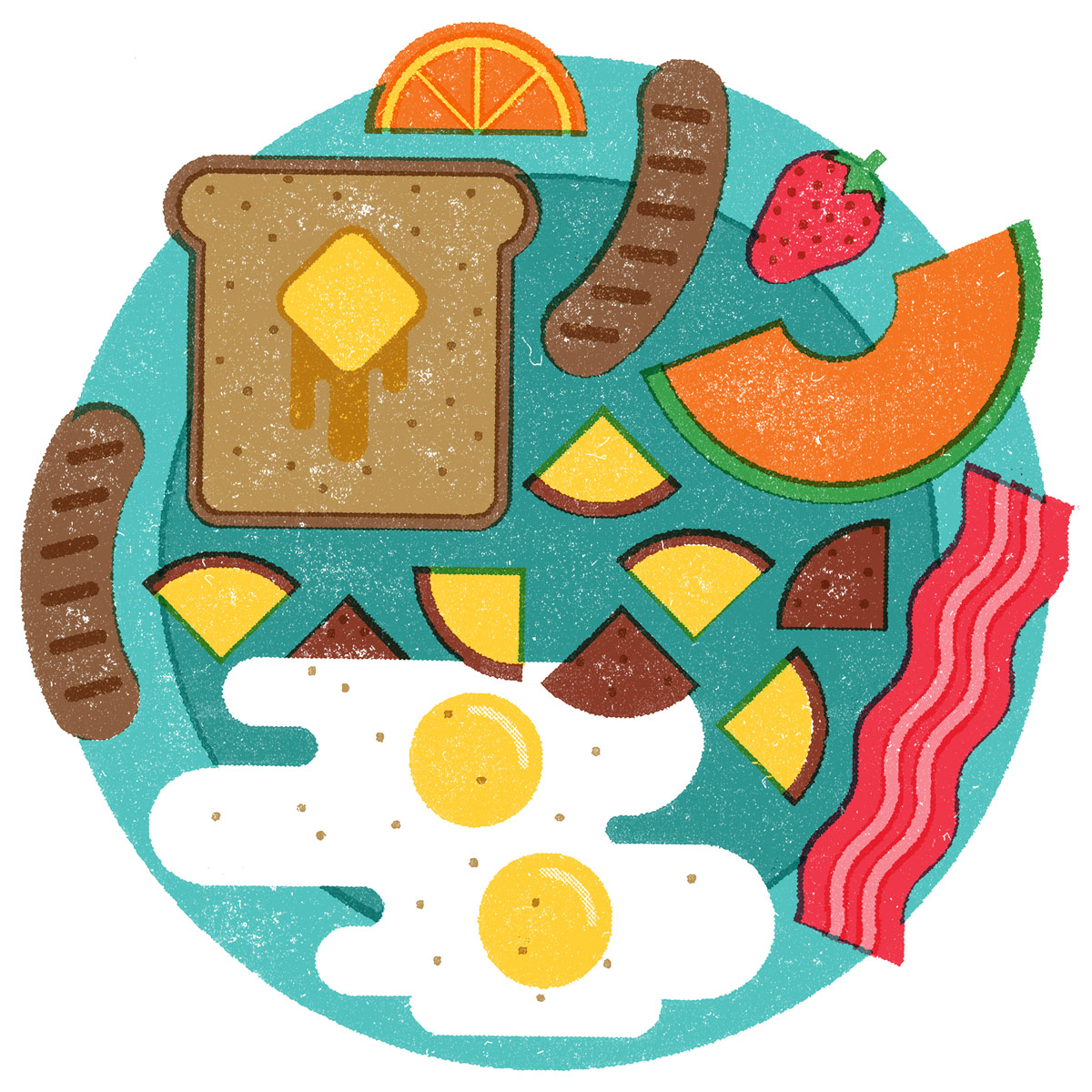
You grew up in Ohio and went to school there, too. Did you stay there after college?
Yeah. Well, that was the other weird thing. I was done with classes in 2005, but Kent lets you finish your final project at your own pace. Because my friends and I had a fledgling company we were trying to make work, none of us had technically finished our degrees yet. When 2008 hit, we didn’t make any money. We had no work. I still didn’t have a degree and I was broke, so I had to move back in with my parents. It was so embarrassing. Thankfully, my parents are the best and told me to stay with them, finish school, and then move on, so I did.
I started freelancing a little bit around Cleveland, and then I moved to Philadelphia for a job in advertising. I worked there for two years to the day. While I was at the agency in Philly, I started doing freelance work. It was a crazy time because I was working more than I ever had before. The agency was in a period of growth, and for a long time I didn’t feel like I owned my projects there: I spent most of my time helping out other people’s projects. I don’t think they thought of me as the most articulate guy for presenting work, but I was kind of like the closer on projects: if there was something that wasn’t going well, I’d come in and fix it. At one point, I think I was called the creative fry cook. (laughing)
During that process, I started gaining some notoriety because I was included in ADC Young Guns and recognized by Print. Pretty soon, I started receiving projects from art directors; Wired saw a poster I made for Wilco and asked if I did illustration work. In my mind, I thought, “No, but I do now.” That was new to me; I didn’t know it was a thing. I never thought I’d have a chance to do editorial illustration. I continued doing freelancing and working a lot of hours at the agency until the point when I left—er, was asked to leave. Whatever. (laughing)
Financially, I wasn’t on my feet yet. I was taking steps to be ready. I had just started talking to my illustration rep, Scott Hull, and I was doing a lot of work, but I didn’t feel ready to freelance full-time yet. That was about four years ago.
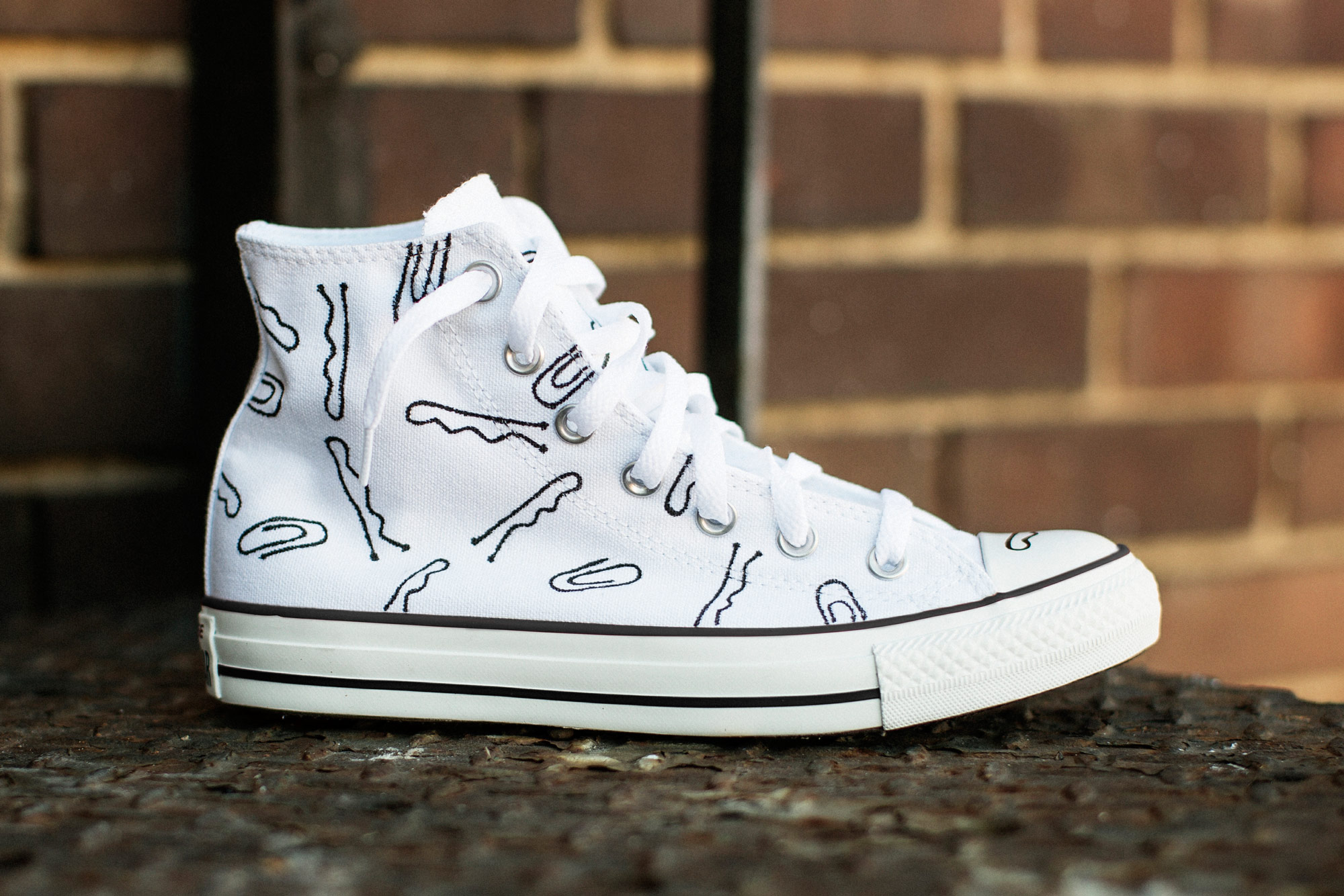
“…my friends and I had a fledgling company we were trying to make work…When 2008 hit, we didn’t make any money. We had no work. I still didn’t have a degree and I was broke, so I had to move back in with my parents. It was so embarrassing.”
Okay, wait—did the agency ask you to leave or did you quit?
It wasn’t that sinister. The company does beautiful higher education work: it was their bread and butter, and that was how they went through the recession bulletproof. When their business began to pick up, they started doing more lifestyle work for brands like Nike. I was put on Nike, and that was my life: I worked 80 hours a week and was so burned out. I had just finished a different project and told them I needed two weeks off because I was creatively tapped. They were nice about it and said, “You can stay if you really want to, but we can tell you don’t want to be here anymore. You should just go.”
So it was a mutual decision.
In a way, I should thank them because I learned a lot there. I was nervous about going out on my own. Thankfully, I had done my due diligence: I had a presence on social media and had been working on a portfolio. When I told everyone I was a freelancer, the work started coming in. I still haven’t had to search out work, which has been great.
That’s awesome! You mentioned drawing when you were younger, but did you have an “Aha!” moment when you knew that graphic design was what you wanted to do? I’m also interested to hear how you were exposed to the idea of design or being able to do something creative for a living.
My dad works like a madman—he’s a third-generation jeweler. I feel bad because my parents never told me I needed to take over the family business. My dad worked all the time and I don’t think he wanted that for me, even though it provided an awesome living. My dad has a passion for work; even though it’s work, he gets so much fulfillment out of it. I’m the same person in that way, so I love to keep busy and work. There was definitely the idea that you had to work for a living, but I watched my dad get so much joy out of it.
It’s amazing that you had such a good example.
Well, I think he wanted me to be a lawyer or something—
Every parent does.
Yeah, seeing his drive and love of work really influenced me.
As far as an “Aha!” moment, I think it was in college. The first time I had a logo class, it clicked. I loved boiling a large idea down into a simple visual mark.
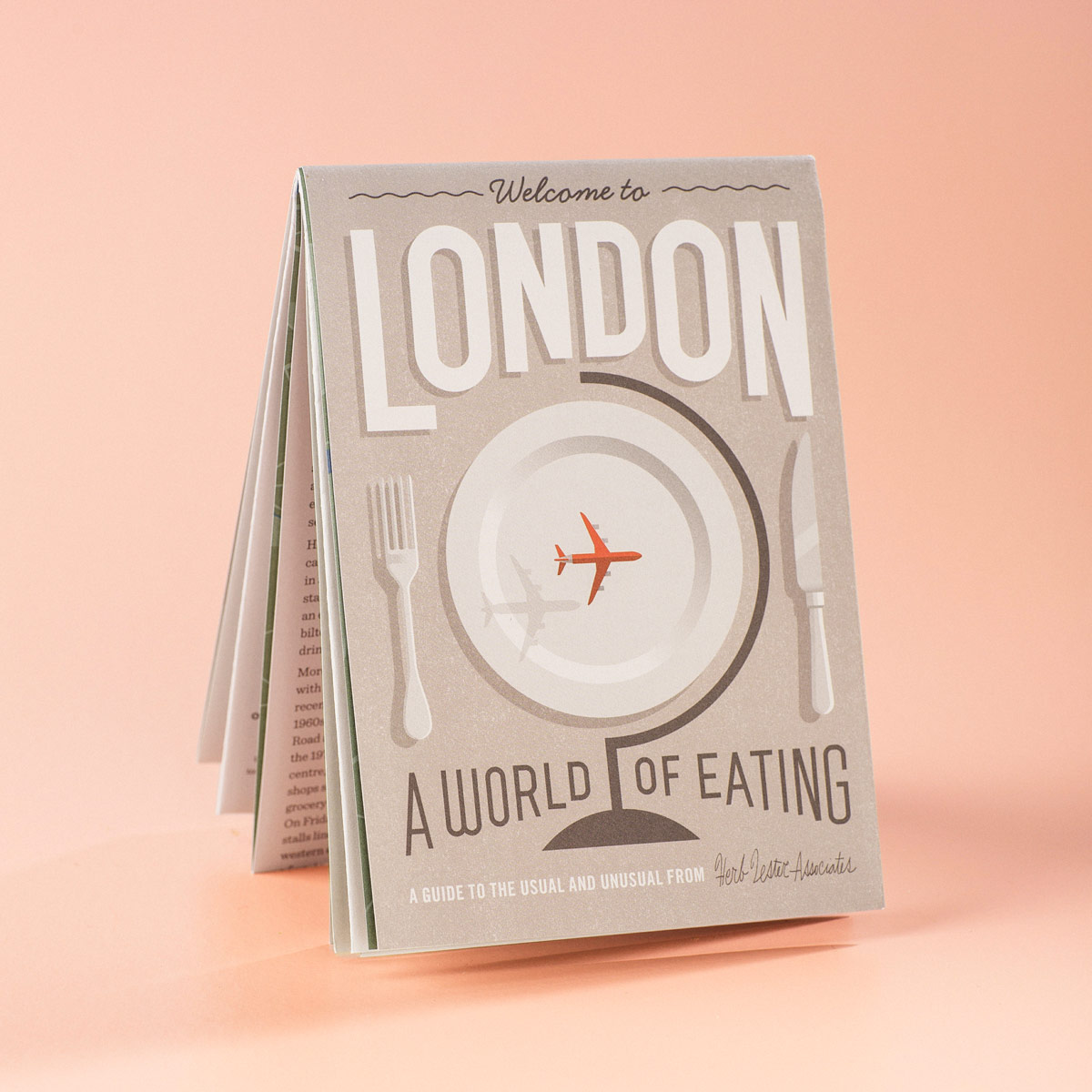
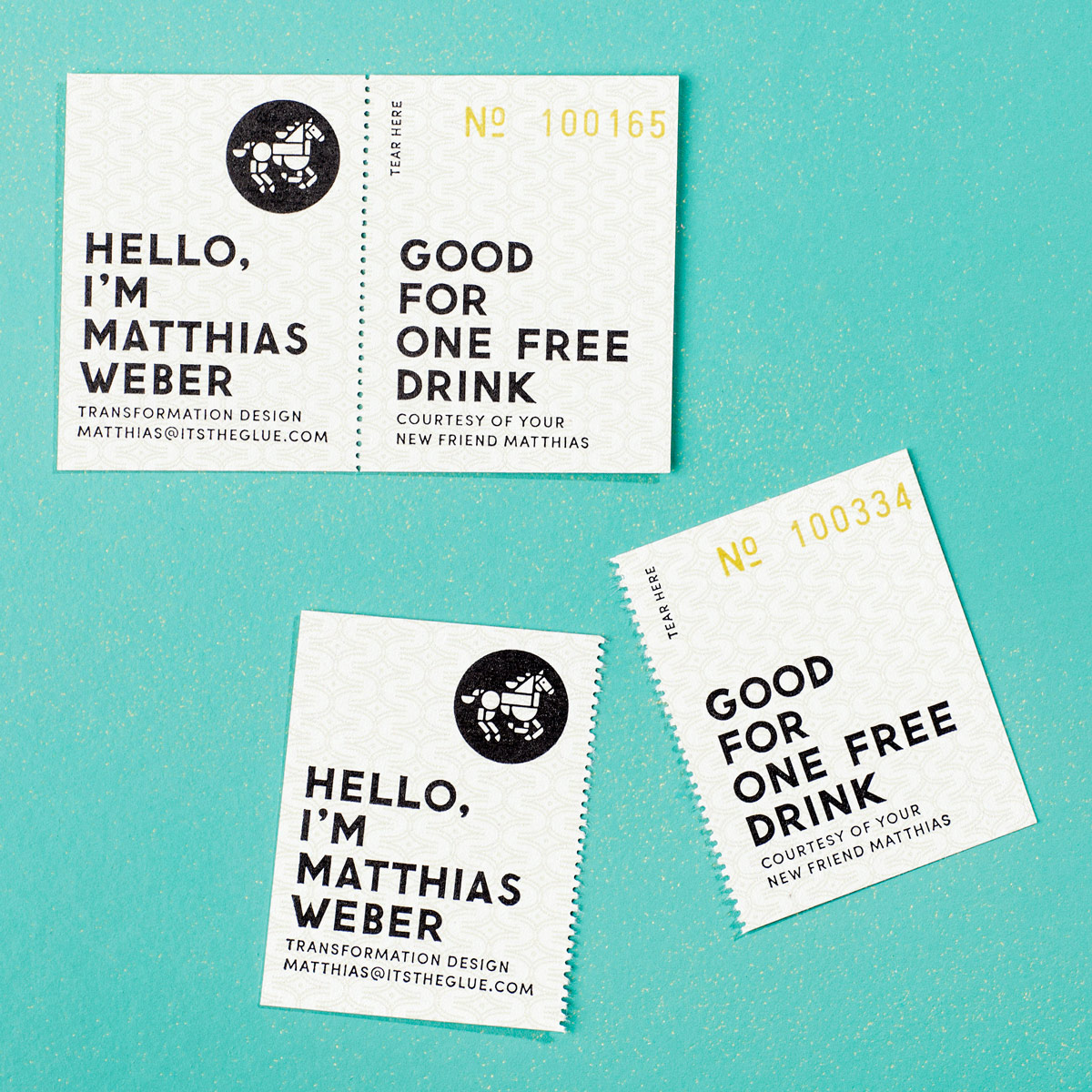
Have you had any mentors along the way?
I feel like you’re supposed to have a famous designer behind the scenes who you can email—Michael Bierut, I have a question! (laughing) I don’t know. My parents’ work ethic was very influential, and I had a few teachers who I looked up to in college. I think what has consistently pushed me to be a better designer is having really talented friends, which maybe isn’t always best because they’re the same age as me. When I started Little Jacket with my friends, there was direct competition that challenged me to continually improve. My girlfriend, Carli, is a graphic designer, and she’s constantly art directing me. As long as I have someone to check over my work, it helps me be better.
That feedback is critical, especially when working alone. Has there been a point when you’ve decided to take a big risk?
Leaving the agency—even though they wanted me to leave—was the biggest risk. I wasn’t financially ready, and I didn’t know what I was doing, but I’m so glad I did it. That’s when I started doing the type of work I’m doing now, and I really enjoy it.
It sounds like your family and friends are supportive?
Yeah. My parents were happy I went to college and got an education. My dad wanted me to be a person with a job and security, but I’m essentially the same person he is: I work at home and I work crazy hours. I think I love my job as much as he loves his job. My parents are always supportive. I’ve been able to give talks and lectures, so when I gave a lecture at Kent, it was so cool to have my parents come listen to me talk about my work. Out of everything I’ve done, a highlight was standing in front of a couple hundred people, talking about my work, with my parents in the audience. That meant so much.
Do you feel a responsibility to contribute to something bigger than yourself?
I wonder: Should I use graphic design to change the world? Should I use graphic design to cure world hunger? I think we all feel that way, and there is a certain guilt I have about working for myself and being able to make cool things.
I believe educating is a great way to give back. I taught for a few semesters and loved it. The change that happens in a kid when they get an idea and understand something—I love that process. I’d really like to do more of that.
Are you creatively satisfied?
When I make something and it’s done, I don’t ever think, “That’s it! This is my life’s work.” I always want to be making something better, and I believe most creatives feel that way.
I do take a lot of joy in my work, though. I love being busy and meeting deadlines, and I get to give lectures and travel. It’s awesome—someone puts me up at a Sheraton and I get to speak in “Conference Room B” next to the continental breakfast! Even if it’s not the most romantic of cities, it’s still fun. The fact that I get to do things like that excites me. I love my job.
Is there anything you want to do in the next few years?
I’m actually doing the work I wanted to be doing a few years ago. When you start taking on editorial projects, you almost have a bingo sheet of clients you want to work with, and that list slowly gets smaller. I’m working on something for the New Yorker right now, which was a square I was very excited to get.
I’d like to focus more on doing projects for myself, as in controlling what I do and not having to say yes to whatever comes through the door. Right now, I say yes to everything, which is great for making money, but it doesn’t always push you forward creatively.
Anytime I’ve done a project for myself, it’s turned out better than I could have actually planned for. For example, my graduate thesis project turned into more than I expected. It was a series of book covers directed toward junior high students. The concept was based on motivating tweens to become interested in reading, and the work was based on the gig poster style I had done earlier on. I received an awful grade on the project I did for school, which I spent months on; I turned in an abysmal paper, but I was excited to share the work.
Unfortunately, no matter how great the design work was, my paper brought my grade down to barely passing. I did graduate and receive my master’s, but the whole experience was something I was eager to forget. I put the project out of my mind for the next few years until I got an email from someone named Steve. Steve really liked my project and wanted to feature it on his design blog. It took me a few minutes to realize who he was, because he called himself Steve. It was Steven Heller! The blog he was referencing was the Daily Heller. I was ecstatic! It made me realize the work—minus the paper—was a legitimate project. Later, a company called Out of Print Clothing saw my covers and reached out to me to license them as their company’s first series of original artwork. I still can’t believe it turned into something real, and now I collect a small royalty every quarter.
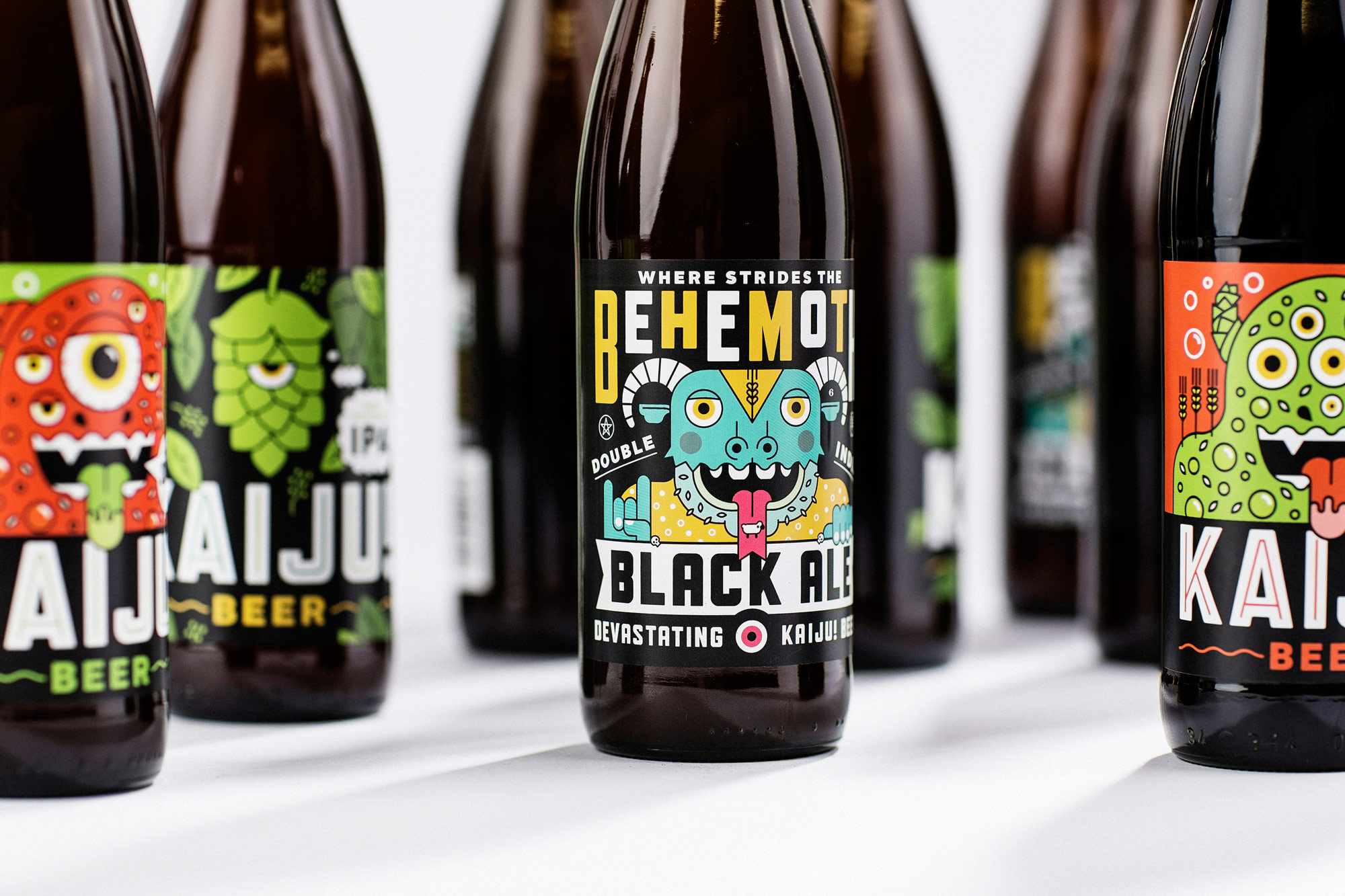
“My dad has a passion for work; even though it’s work, he gets so much fulfillment out of it. I’m the same person in that way, so I love to keep busy and work.”
When I became a freelancer, I wasn’t sure where projects would come from. I was also frustrated with people not paying, or asking for projects and not wanting to pay what they were worth. I did a self-initiated project called Freelance Ain’t Free and made t-shirts and posters and things, which helped me keep the lights on. Projects like that have been guiding in a way.
Now, I have a blog where I draw what I eat, called Barrel Body. I was doing it as an exercise to try something new. The illustrations were in a looser style and they started catching people’s interest. Nothing much has come of it, but it was helpful the other day when I was working with the New Yorker. They loved the style and it helped guide the project a little. I want to focus on doing a project that helps guide my path more, even though I don’t exactly know what that is.
Yeah, that’s super cool. What advice would you give to a young person starting out?
Be committed. That’s something that we, as a society, are bad at. We want everything immediately. We want to look at all the Instagrams and like all the Instagrams; if we email someone, we want an answer now. It takes a while to get to do what you want to do. When I was in school, I heard someone say it would take eight years to be an illustrator. I heard that and thought, “Yeah, right. Whatever.” But it did take about eight years for me before I really started doing exactly what I wanted to be doing. Be focused on what you want to do and wait for it to happen.
There’s so much pressure to succeed right out of school, but you don’t just arrive on the scene and start your dream job. Sometimes you have to work crappy jobs and do side projects that you love while you’re working toward something. But I think all those experiences make you who you are, and they make the work more rich. And, hey, if you connect with your dream job out of school, good for you.
Yeah. I remember one of my biggest goals in college was to be in Communication Arts, and that happened two years out of college. At the time, I was working at Little Jacket, but I was also working at Outback Steakhouse washing dishes. You have to pay your dues a little bit. It takes time.
Before we started the interview, you mentioned that you recently moved to Chicago. Maybe you don’t have an answer for this because you just arrived there, but how does Chicago influence the work you do?
I think there’s a certain energy that comes from living in a city. I’ve never lived in New York, but I’ve always wanted to because there’s crazy energy there! I lived in Philly, which is a beautiful, disgusting, gross, cute town. Being there and not having to be in a car was great. Being from the Midwest, you drive everywhere. When I first moved to a city, I loved walking everywhere. I really appreciated it, even though it was the simplest thing in the world.
Any city has more of a hub for creative people. The amount of contacts you meet in a city that link you into the city is awesome. I don’t know a lot of people here. I almost want to get a studio space where I can work with a few people just so I can get to know my community more. Otherwise, I might be stuck in my neighborhood forever.
I was going to ask—is it important to be part of a community?
I think I’ve always had close designer friends who’ve pushed me to be better, but I also like to be alone. In a lot of ways, I’m very introverted. I like to have my time to think. That was the challenge of working at an agency: I was constantly in meetings, and it was counterintuitive to the creative process. I felt like I never got anything done. Now that I freelance, I have a process, and I know what time of day my brain works best. All my thinking happens during the first part of the day, and the afternoon is for making and finishing things.
What does a typical day look like for you?
First, I roll out of bed and make coffee. Before I start my day, I need to have shoes on: there’s something about putting shoes on that makes me feel like I’m at work. The first part of the day is spent reading, sketching, and thinking. After lunch, I’m executing the work, designing, or illustrating. If I have articles to read for the next day, I’ll read them before bed and wake up with ideas in the morning. It’s a boring day. Sorry, it’s not glamorous—although sometimes I do say, “Fuck it!” And go eat breakfast at a diner, see a movie, and come back to answer some emails.
Is there any music you’re into right now?
I really like the new Spoon album, They Want My Soul, and I’m surprised that their creative arc hasn’t stopped. They’re still working to make great music. Also, I’m embarrassed to say I’m still listening to Mac DeMarco’s Salad Days album. It’s been a year, but it’s so good that I can’t stop listening to it. (laughing)
Any favorite movies or TV shows?
Let me know if you have any suggestions, because I’m in a drought. I do watch The Walking Dead, and when I’m working, I like to watch 30 Rock. Each episode is so skillfully written, and they jam so many jokes into each one that you don’t catch all of them the first time you watch it. It brings me a lot of happiness just listening to it, and I’ve watched the whole series multiple times. For movies, I recently saw Guardians of the Galaxy, which is the best movie I’ve seen in a long time. It might just be cause it has an amazing soundtrack of ’70s rock.
Do you have a favorite book?
No. I don’t read at all. It’s embarrassing. (laughing)
Well, I know you eat. What’s your favorite food?
Breakfast food, but not brunch food. I like some kind of egg, bacon, maybe bread, and a vegetable. I like the Mikey Burton classic two-egg breakfast with a cup of coffee. It’s the best part of the day.
Alright, last question: What kind of legacy do you hope to leave?
(laughing) Oh, man!
You didn’t study up for this one?
No. Man, nobody’s going to remember who I am. I just want people to think, “That guy was really nice, he worked really hard, and he had a great beard.”
